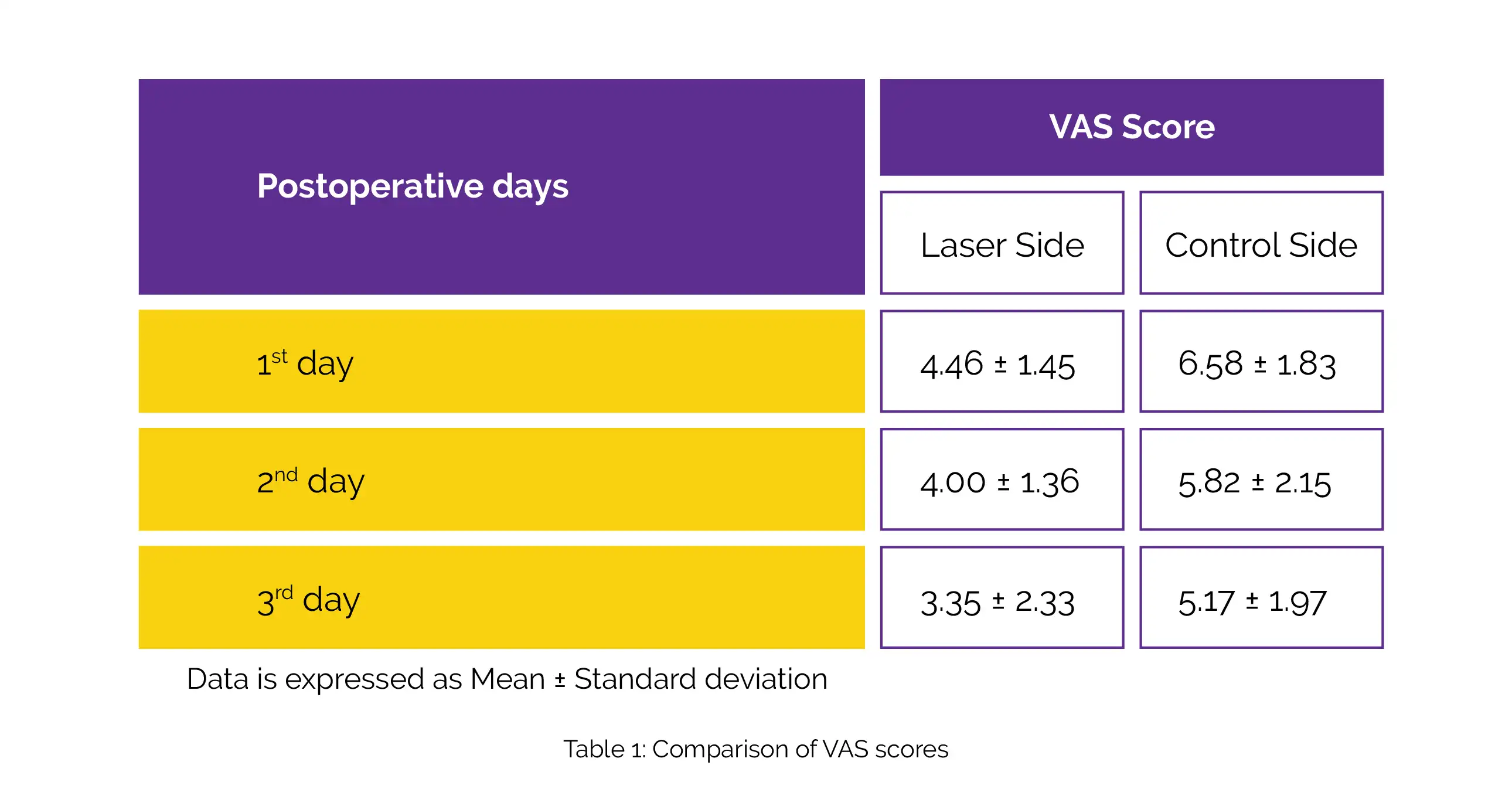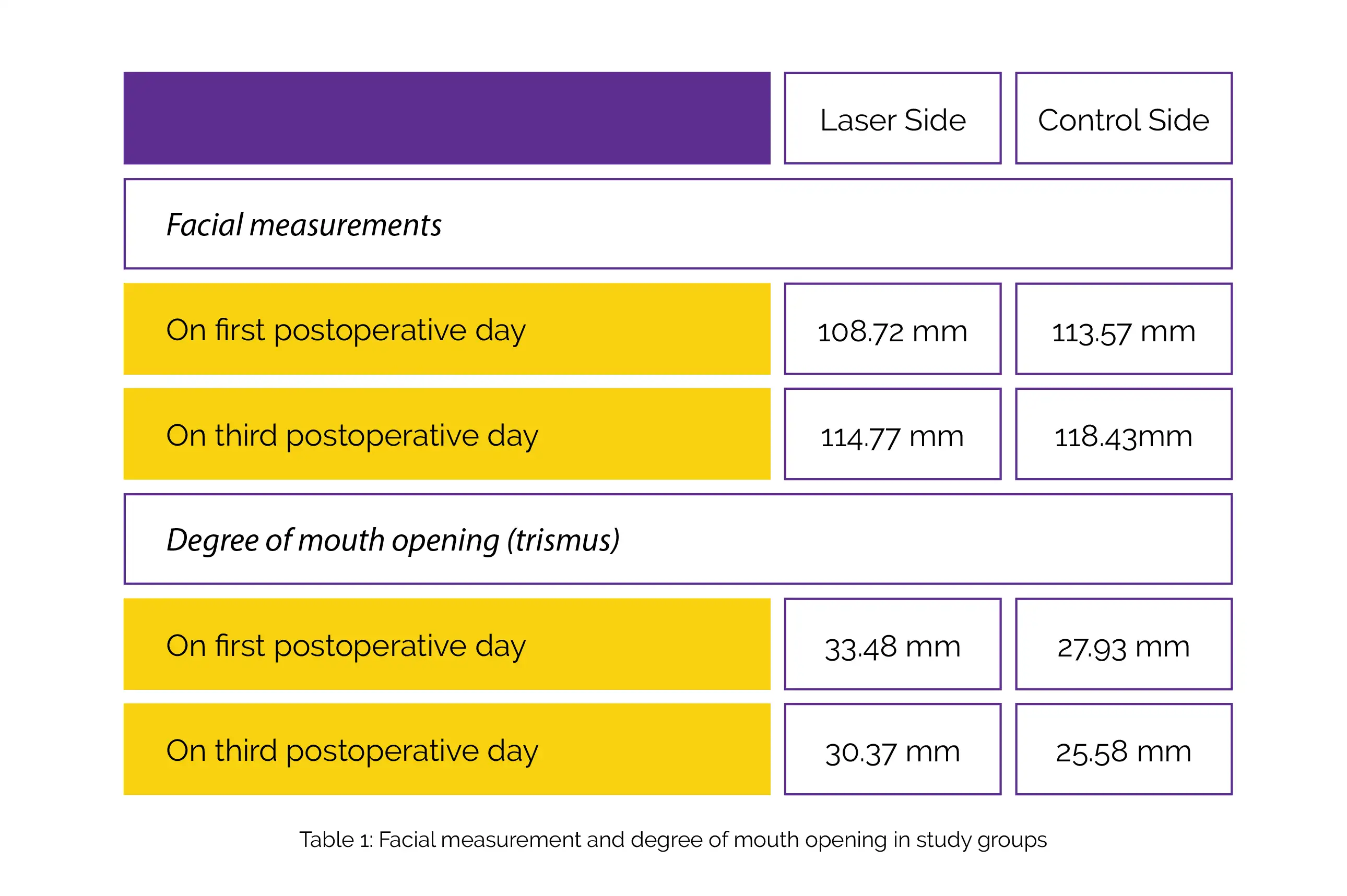Categories
Change Password!
Reset Password!


The purpose of this randomized, single-blinded, split-mouth pilot study was to analyze the impact of low laser therapy on postoperative pain, face swelling, and mouth opening restriction, all of which are frequent complications of mandibular third molar surgery.
A low-level laser therapy using 940 nm is beneficial in relieving swelling, painful episodes, and trismus after oral surgical procedures.
The purpose of this randomized, single-blinded, split-mouth pilot study was to analyze the impact of low laser therapy on postoperative pain, face swelling, and mouth opening restriction, all of which are frequent complications of mandibular third molar surgery.
This study included 20 subjects (7 females and 13 males) with a mean age of 26.3±7.4 years who required surgical excision of symmetrical bilaterally impacted lower third molars. In every subject, one side was treated with low-level laser therapy while the other side served as control.
Using postoperative single intraoral application of a 940 nm laser beam at four places, laser irradiation was carried out. On the 1st, 3rd, and 7th postsurgery days, pain, facial edema, and trismus were assessed. Data assessment was done with the aid of unpaired t-test and Mann-Whitney U test.
Laser-treated sides demonstrated a substantial decrease in visual analogue scale (VAS) pain ratings in comparison to control sides over the first three postoperative days, as shown in Table 1:

Trismus and facial swelling considerably declined in laser-treated sides compared to control sides on the first and third postoperative days, as shown in Table 2:

Following surgical removal of impacted third molars, a single intraoral use of low-level laser therapy is effective in lowering postoperative inflammatory sequеlae and thus can be utilized as add-on therapy in the management of postoperative complications.
Russian Open Medical Journal
Effect of low-level laser therapy on inflammatory sequеlae of impacted mandibular third molar surgery: A single-blind, placebo-controlled, randomized clinical trial
Shehab Ahmed Hamad et al.
Comments (0)